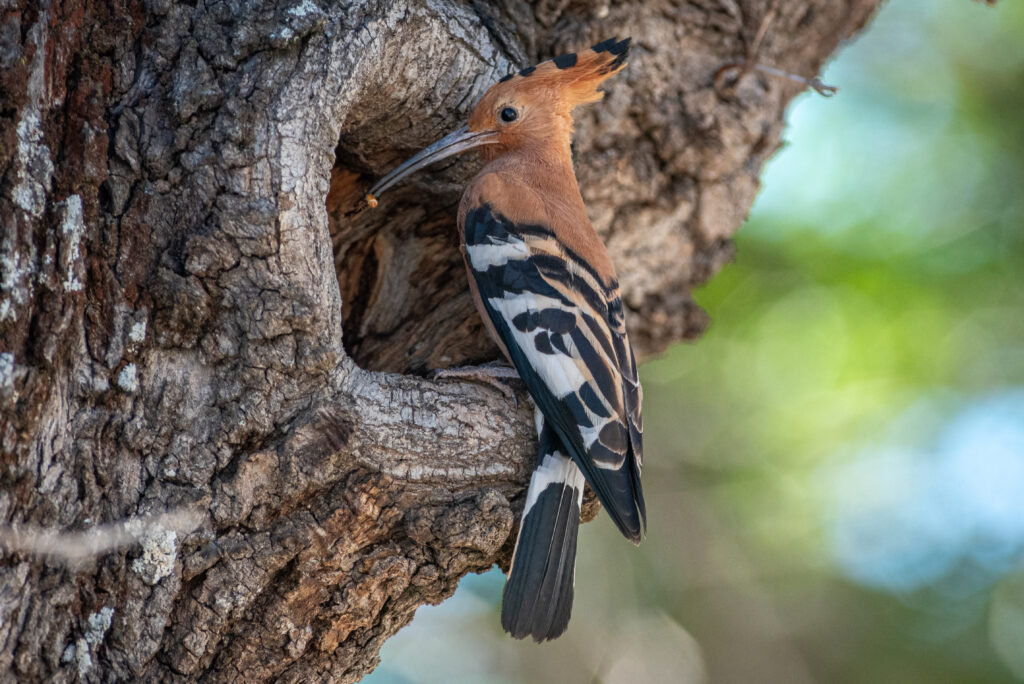By ROD AMNER
The dead oaks on Henry Street may need trimming or felling, but local twitchers warn that this will need to be done sensitively at this time of the year as a number of the trees are home to hole-nesting birds, including hoopoes and wood hoopoes.
According to Afrifreak, once paired with a mating partner, the male African hoopoe finds a suitable nest once paired with a mating partner. The female lays between 4-7 eggs over successive days, often taking a day’s break between the first and second egg. The female remains on the eggs, incubating them for between 15-16 days.
While the female remains with the offspring, the male provides food for the mother and chicks. After a week, the female also contributes to the chick’s diet until they leave the nest from one month and find independence by the age of two months.
Pairs of African hoopoes remain together during the breeding period, after which they may find a new partner. Males typically choose to use the same site to nest in the following year. The breeding season takes place from August to February and peaks between September and November.
Female and young hoopoes can secrete an odour to ward off predators, Afrifreak warns. Females will huff and hiss if disturbed while nesting, and young hoopoes also defend themselves with their wings and bills when threatened.
Adult hoopoes can hover outside of the nest to feed young. They are well adapted to man-made habitats like gardens, orchards, plantations – and dead oak trees!


